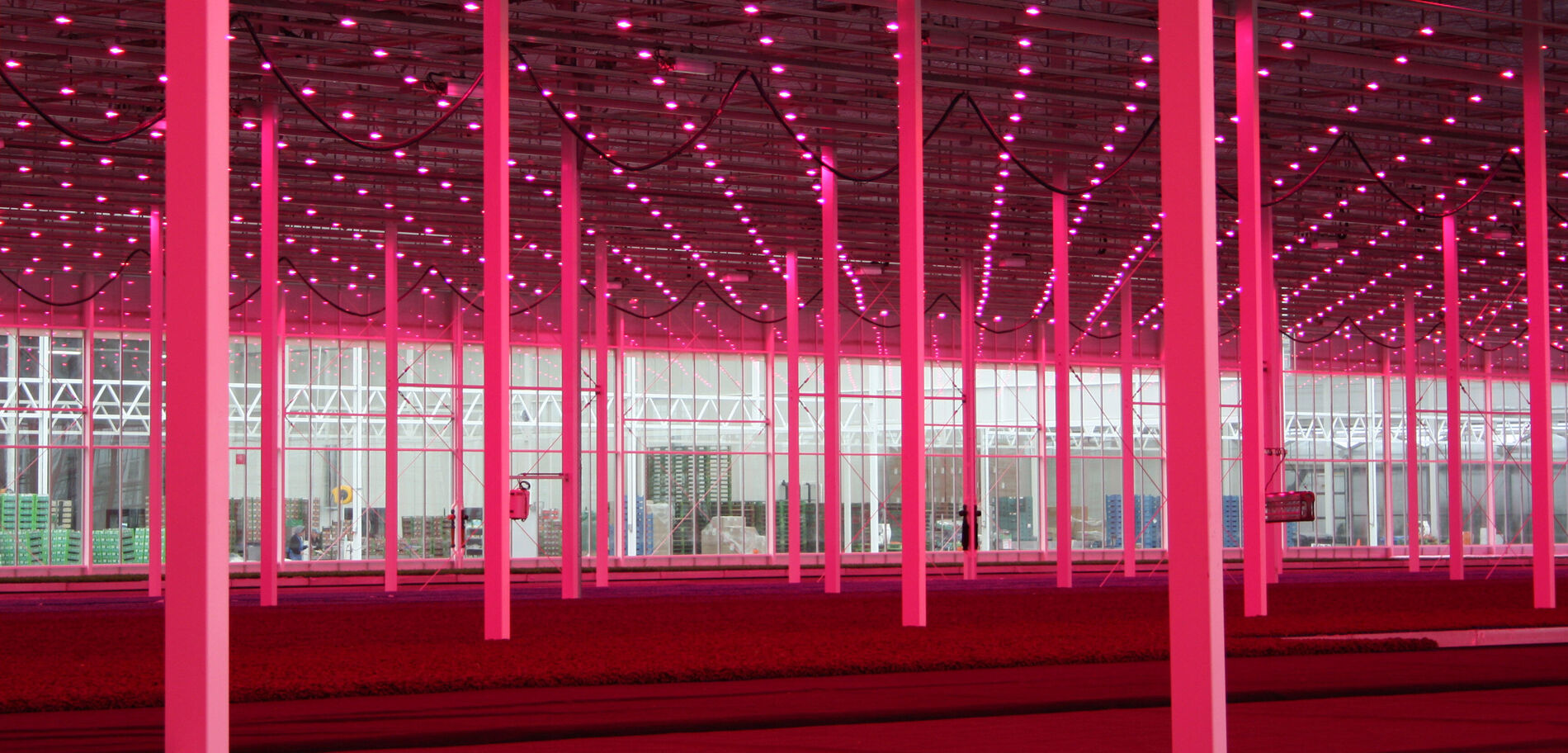News
HortiDaily: Water cooled LED to cope with heat and humidity trapped under energy screens designed to limit light emission
Leamington follows the footsteps of Kingsville (Ontario, Canada) council for a bylaw on light pollution, ordering that light cannot cause a nuisance by shining on neighbouring properties or into the night sky. Because of this new Greenhouse Light Abatement Bylaw, growers must keep ceilings, sidewalls and end walls completely covered with curtains from one hour before sunset to one hour after sunrise. Ceiling curtains must be at least 90 percent closed between 2 a.m. and 6 a.m.
Greenhouses must have sidewalls and end walls installed and operational by April 1. The ceiling curtains must be up by October 1. In the interim, operators without curtains must shut out the lights from 8 p.m. to 2 a.m. starting in January. Growers in Kingsville and Leamington are now facing a major challenge. Growers and crop consultants are concerned about the impact of these measures on their crops. It will require a different approach to controlling the greenhouse climate.
Neighbours
Kurt Parbst, director business development at Envirotech Cultivation Solutions, recognizes this problem with many of its customers: “While nuisance regulations that protect property rights are not new, the greater adoption of supplemental lighting is getting the attention of both neighbors and municipalities. Bylaws are being adopted and considered in Canada as well as the US that create a guiding framework that actually help protect neighbors and growers. While having rules or a defined minimum standard is helpful, it creates some technical challenges. We know that grow lights emit light and heat into the greenhouse and plants transpire in response. Temperature and humidity levels elevate beneath a curtain or screen that is intended to reflect light back to the crop and prevent transmission to the sky."
"It is important to select a screen that has high light interception but reasonable heat and humidity transport via the ‘tightness’ of the woven pattern and capacity of humidity transport yarns. If high humidity and temperature persist, the resolutions are either gapping the screen or actively ventilating beneath the screen, which are less than ideal. Another method is simply to reduce the total amount of energy that is introduced beneath the screen via lamp selection. With traditional lighting, light and heat are traveling partners. However, Oreon has solved the problem of keeping lamp electronics cool with a water circuit which allows a significant amount heat to be transferred out of the growing area. This separation of light and heat ensures a high photosynthetic growth rate, while unwanted heat transpiration is avoided. This is a powerful tool.”
Temperatures
Tyler Rodrigue, director of sales and projects at Westland Greenhouse Solutions agrees: “In most discussions we have, the biggest challenge that growers face is the need for gapping the screens to let the heat from the HPS lighting out. This is greatly reduced when working with water cooled LED fixtures and proves to be very beneficial to the grower. When a grower in these regions is thinking about switching from HPS to / or starting with LED, they should consider the technical benefit of actively cooled LED grow lights.”
The Dutch Powerhouses of Oreon use a water-cooling technique that extract the heat from the LED fixtures, and transfer it out of the growing area via the cooling water circuit. Heat and light are de-coupled and the climate becomes more stable and controllable. In fact, for every ~1,000W that is introduced via the lamp approximately 350W of heat can be removed, avoiding a transpiration response. An additional advantage is that the gained heat can be reused. The light output is extremely high and because of the continuous cooling, the lifespan of the fixture and the diodes is extended, and the light output is guaranteed to be more consistent over the years (L90 B05 - 50,000 hrs).
Canadian Cannabis grower Medisun has been using Oreon’s LED grow lights since 2018. “It gives us short and more compact crops with improved THC/CBD potency compared to HPS lamps and it makes it feasible to complete one extra cycle per year”, says Laust Dam COO at Medisun. “The biggest advantage is the water-cooling that keeps our greenhouse climate stable. We can keep windows closed and keep CO2 and in particular odor inside, a common problem for cannabis growers.
Light pollution
Laust continues: “Our blackout curtains are used for control of daylength but also for avoiding light pollution. The huge benefit of the Oreon lamps comes when we have to close the blackout curtains. The water cooled fixtures do not add extra heat to the greenhouse and as venting is limited with traditional greenhouse vents when the blackout is closed we can still keep the crop at required temperature and humidity. With other light sources, like HPS or LED’s without the water cooling ability would require other ways of active cooling or ventilation and require abundance of more energy to keep same temperatures and humidity levels.”
“At Medisun we “live by” being sustainable and minimize our pollution footprint. We work hard to optimize our greenhouse to do least pollution of water and air but absolutely also when it comes to light pollution. We optimize the use of our blackout screens. We always have the lights off in evening hours when they potential can make the worse kind of annoying light pollution. We hope doing all this that our municipality do not have to introduce these restrictive bylaws as we see them do in Kingsville and Leamington,” Laust closes the story.


